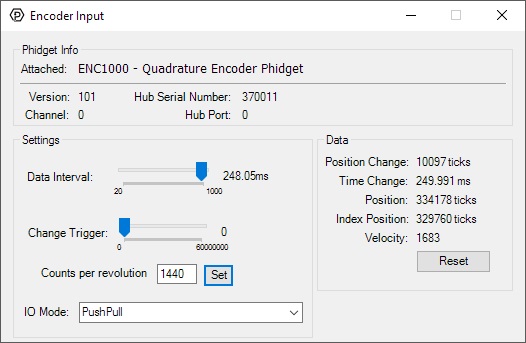Template:UgEncoderIntervalIOMode
From Phidgets Support
Encoder

When you double click on an Encoder object, a window like the one pictured will open.
- At the top of the window, information about your device and the properties of this particular channel will be listed.
- On the left, change trigger and/or data interval can be changed. For more information on these settings, see the Data Rate/Change Trigger page. You can enable the input (if applicable) and specify the counts per revolution (CPR) to enable velocity calculation. Press enter after typing a number to enable velocity. You can also change the IO mode of the encoder to enable pull-up or pull-down resistors on the encoder input if necessary.
- On the right, real-time data is displayed:
- Position Change: The number of ticks (or quadrature cycles) that have occurred since the last change event.
- Time Change: The amount of time in milliseconds that has elapsed since the last change event.
- Position: The total position in ticks relative to where the encoder was when the window was opened.
- Index Position: The position where the index channel (if supported by this encoder) was last encountered.
- Velocity: If a CPR has been specified, the average velocity in rotations per minute.
